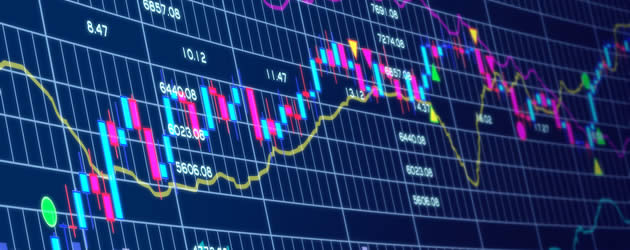Indian Rupee to US Dollar (INR/USD) Exchange Rate Trending at Nine-Month Low
The Indian Rupee to US Dollar (INR/USD) exchange rate began the week trending in the region of a nine-month low, despite India’s gauge of manufacturing producing a stronger-than-anticipated reading.
Fluctuations in the commodities market and disappointing news from China reduced demand for higher-risk assets like the Rupee and kept the currency trending in a weaker position even as the manufacturing report showed the most rapid improvement in business conditions since the beginning of 2013.
PMI jumped from 51.6 to 53.3 in November, beating expectations for a figure of 51.3.
HSBC economist Pranjul Bhandari said of the result; ‘Manufacturing activity accelerated further in November, led by higher output and new orders. Domestic orders saw the biggest increase, even as new export orders continued to be strong.’
However, the persistent weakness in the Rupee is the result of a number of factors. As stated by NDTV; ‘The Rupee is weakening because of global factors. A broad rally in the Dollar has led to weakness in nearly all currencies. The Euro and the Yen are also trading at multi-year lows against the Dollar. […] Expectations of a cut in interest rates on Tuesday are also weighing on sentiment’.
The US Dollar to Indian Rupee (USD/INR) exchange rate hit a low of 62.1300
Pound Sterling to Euro (GBP/EUR) Exchange Rate Gains after UK Manufacturing Report
The Pound Sterling to Euro (GBP/EUR) exchange rate advanced on Monday after the UK’s Manufacturing PMI took investors by surprise and came in at a four-month high.
The index had been expected to soften, so the unexpected gain was well received.
In a statement published with the figure, David Noble of the Chartered Institute of Procurement & Supply observed; ‘Though progress is not as robust as in the first half of the year, balance is being restored as output, orders and employment levels all rise at moderate if unexciting rates. This domestic uplift has been the counterbalance to disappointing export opportunities with the strength of sterling and lack of activity from emerging markets having an impact.’
The Pound gained against both the Euro and US Dollar in the hour following the report’s publication.
The GBP/EUR exchange rate was trending in the region of 1.2578
US Dollar to Pound Sterling (USD/GBP) Exchange Rate Softer Before US Stats
The US Dollar to Pound Sterling (USD/GBP) exchange rate shed around 0.2% on Monday as investors responded to the news that the pace of manufacturing growth in the UK climbed to a four-month high in November.
However, the US Dollar was trending in the region of a seven-year high against the Yen ahead of the release of the US ISM and Markit manufacturing reports.
In the view of analyst Toshiya Yamauchi; ‘The Dollar will probably remain strong amid declines in oil prices and dovishness among other nations’ central banks. If oil prices continue to fall, that would build the case for easy monetary policy in more places than just Europe and Japan.’
As the day continued the US Dollar extended declines against the Pound due to a mixed batch of US manufacturing reports.
The nation’s ISM Manufacturing index fell from 59 to 58.7 in November, a shallower decline than anticipated, while the Markit Manufacturing PMI was revised from an initial estimate of 54.7 to 54.8, a stronger reading of 55 had been expected.
The US Dollar to Pound Sterling (USD/GBP) exchange rate was trading in the region of 0.6379
Australian Dollar to US Dollar (AUD/USD) Exchange Rate Recoups Losses after RBA Announcement
The Australian Dollar to US Dollar (AUD/USD) exchange rate lost around 0.5% during the Australasian session as investors responded to the below-forecast manufacturing PMI from China and another fall in commodity prices.
China’s manufacturing report showed the first contraction in sector production since May, and prompted this response from economist Hongbin Qu; ‘The HSBC China Manufacturing PMI fell to a six-month low of 50.0 in the final reading for November, down from 50.4 in October […] Domestic demand expanded at a sluggish pace while new export order growth eased to a five-month low. Disinflationary pressures remain strong while the labour market weakened further.’
Australian Dollar weakness was also derived from the rejection of the Swiss Gold Referendum. It had been expected that the proposal in favour of altering the Swiss National Bank’s reserve distribution would be rejected, but the result still caused a drop in gold prices and a tumble in the ‘Aussie’.
As stated by currency strategist Sean Callow; ‘The ‘Aussie’ gold got sold off on the expectation that gold is going to get hammered. The Swiss referendum outcome was not unexpected, but like the OPEC meeting last week news like this can still have an effect.’
On Tuesday the Australian Dollar recovered some ground as the Reserve Bank of Australia (RBA) left policy unchanged and the language of its accompanying statement unaltered.
The Australian Dollar to US Dollar (AUD/USD) exchange rate was able to recover from an over four-year low.
The Australian Dollar to US Dollar (AUD/USD) exchange rate is currently trending in the region of 0.8475.

